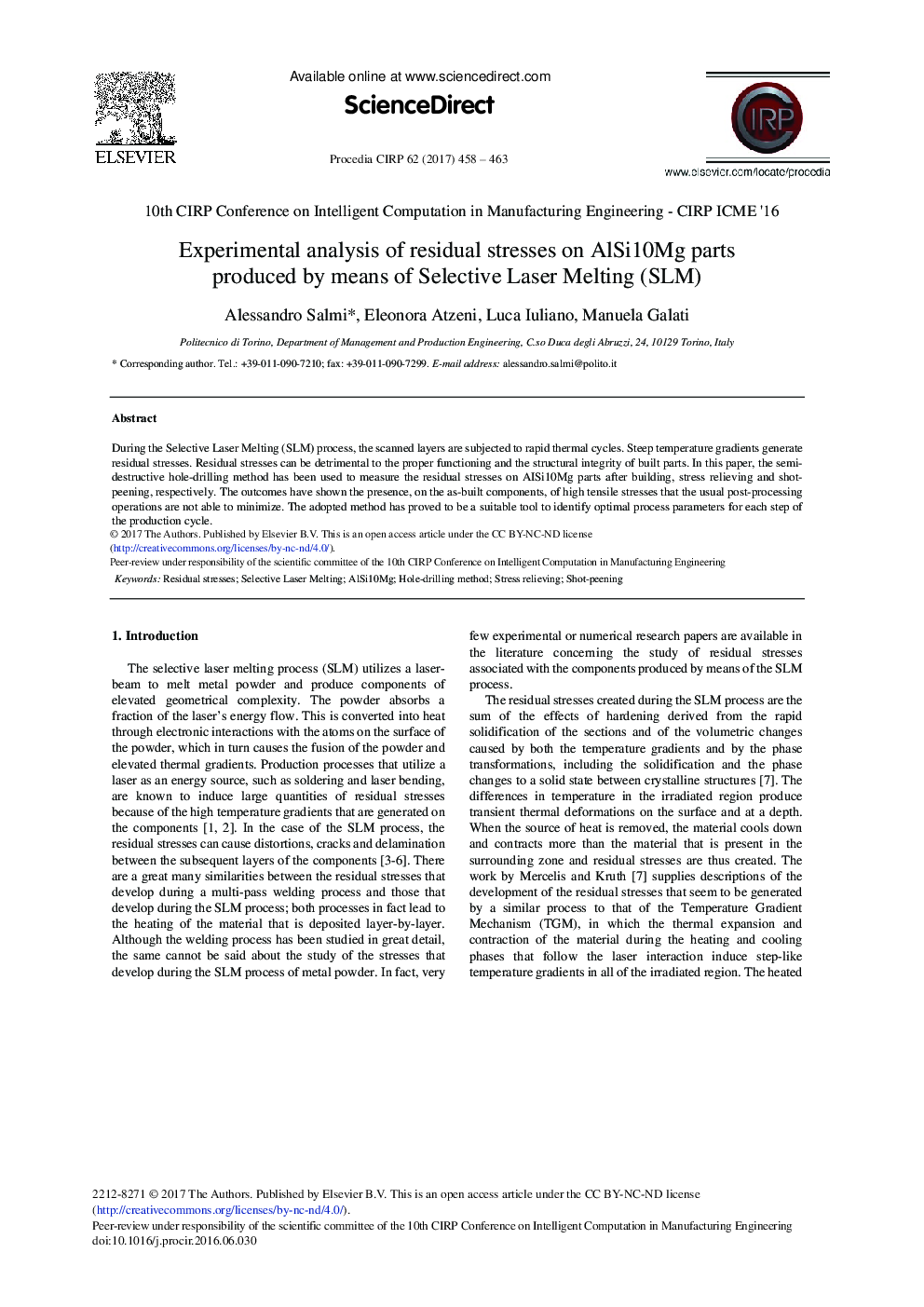| Article ID | Journal | Published Year | Pages | File Type |
|---|---|---|---|---|
| 5470401 | Procedia CIRP | 2017 | 6 Pages |
Abstract
During the Selective Laser Melting (SLM) process, the scanned layers are subjected to rapid thermal cycles. Steep temperature gradients generate residual stresses. Residual stresses can be detrimental to the proper functioning and the structural integrity of built parts. In this paper, the semi-destructive hole-drilling method has been used to measure the residual stresses on AISi10Mg parts after building, stress relieving and shot-peening, respectively. The outcomes have shown the presence, on the as-built components, of high tensile stresses that the usual post-processing operations are not able to minimize. The adopted method has proved to be a suitable tool to identify optimal process parameters for each step of the production cycle.
Keywords
Related Topics
Physical Sciences and Engineering
Engineering
Industrial and Manufacturing Engineering
Authors
Alessandro Salmi, Eleonora Atzeni, Luca Iuliano, Manuela Galati,
